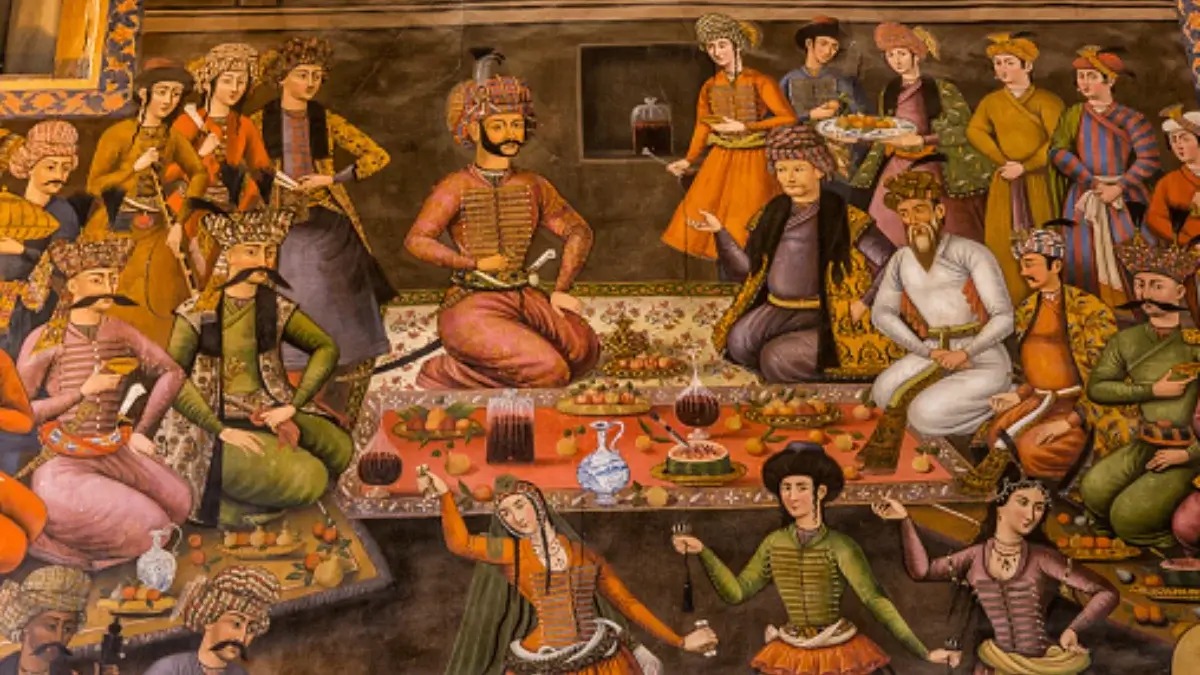परिचय
The year 1206 CE marks a monumental turning point in the history of the Indian subcontinent: the establishment of the Delhi Sultanate. Not only did this event inaugurate nearly three centuries of continuous Muslim rule over large swathes of northern India, but it also transformed the region’s political, social, and cultural landscape. The founding of the Sultanate by Qutb-ud-din Aibak, a former slave general of Muhammad Ghori, signaled the rise of new power structures, administrative models, and interactions that would shape the trajectory of India through the medieval period and beyond.
Background: Prelude to the Sultanate
Ghurid Expansion and Indian Conquests
In the closing decades of the 12th century, the power vacuum created by the weakening of the Rajput kingdoms was filled by the Ghurid Empire, centered in Afghanistan. Muhammed Ghori’s repeated invasions culminated in the defeat of the last Rajput strongholds, notably at the Second Battle of Tarain (1192 CE) against Prithviraj Chauhan and at Chandawar (1194 CE) against the Gahadavalas. These victories enabled the Ghurids to conquer and administer vast regions of north India, including Punjab, Delhi, and parts of Bengal and Bihar.

Qutb-ud-din Aibak: The Rise of a Slave General
Among Ghori’s most capable military commanders was Qutb-ud-din Aibak, a Turkic slave who had risen through the ranks on account of his talent and loyalty. Entrusted with the conquered territories as a military governor, Aibak not only subdued local rebellions but also launched expeditions to extend Ghurid authority into Rajasthan, the Gangetic plains, and beyond. He established his main base in Delhi, erecting monumental structures like the Qutb Minar as lasting symbols of Ghurid power.
The Turning Point: Death of Muhammad Ghori (1206)
Collapse of the Ghurid Empire
In 1206 CE, Muhammad Ghori was assassinated near the Indus River. His sudden death created an immediate power vacuum. The Ghurid Empire, a patchwork of aggressively acquired territories, quickly disintegrated due to succession disputes, hostile neighbors, and ambitious provincial officers.
Qutb-ud-din Aibak’s Declaration
Seizing the opportunity, Qutb-ud-din Aibak proclaimed his own independence from Ghurid overlordship. Recognizing the military, political, and economic advantages of his position in Delhi, he declared himself Sultan—effectively founding the first indigenous Muslim dynasty in India and laying the foundations for the Delhi Sultanate.
Governance, Legitimacy, and the Early Days
A Slave Sultan
Qutb-ud-din Aibak’s rise was revolutionary. He was not of royal birth but was a mamluk (slave) who became a king—part of a transformative class of military leaders known as Mamluks या Slave Kings. His ascension broke with older traditions of hereditary rule in India, inaugurating a more merit-based, militaristic mode of governance.
Administrative Structure
- Delhi as Capital: Delhi was chosen for its strategic location, access to resources, and defensive strengths.
- Provincial Administration: The Sultanate retained much of the local feudal administration but placed loyal Turkish slaves and officers in key posts, creating an effective network of military and administrative control.
- राजस्व प्रणाली: Aibak and his successors imposed new taxation systems, often collecting land revenue directly to support the standing army and state infrastructure.
Religious Policies
While the new rulers promoted Islam as the state religion, early Sultans, including Aibak, often adopted pragmatic approaches towards their vast Hindu-majority subjects. While temple destruction and mosque-building occurred, Aibak also patronized Persian literature and built alliances with local elites when needed for stability.
Monumental Architecture
- Qutb Minar: Construction was begun under Qutb-ud-din Aibak, symbolizing both the advent of the Sultanate and the triumph of the new regime. It remains one of the world’s tallest brick minarets and a UNESCO World Heritage Site.
- Quwwat-ul-Islam Mosque: Built in Delhi from materials sourced from conquered temples, highlighted the fusion and contestation of architectural styles and cultures.
Evolution and Succession
Qutb-ud-din Aibak’s reign was short (1206–1210 CE); he died in a polo accident. He was succeeded by his son-in-law इल्तुतमिश, who consolidated and expanded the base Aibak had established, ensuring the endurance and strength of the Delhi Sultanate through turbulent early years.
Enduring Impact and Significance
Political Transformation
- The Delhi Sultanate replaced fragmented Rajput principalities with a centralized and militarized Islamic state.
- It established Delhi as the enduring political capital of northern India—a role it would retain in various forms up to the present day.
Social and Cultural Exchange
- The Sultanate promoted the migration of Persian, Turkic, and Central Asian scholars, artisans, and traders, enriching India’s urban culture and administrative systems.
- Persian became the language of administration and culture, laying the foundation for Indo-Persian art, literature, and architecture.
Spread of Islam
The Sultanate played a major role in the spread of Islam in northern India, but also in fostering new forms of Sufism and syncretic religious developments that continue to shape Indian spirituality.
Seeds of Later Empires
The institutions and administrative practices developed under the Sultanate laid the groundwork for later mighty empires—most notably the Mughals—and the political boundaries of medieval India.

Interesting Facts
- Qutb-ud-din Aibak was known as Lakh Baksh (“Giver of Lakhs”) due to his legendary generosity toward poets and the needy.
- The early Sultanate was often precarious, facing repeated challenges from Mongol invasions, local rebellions, and rival claimants.
- The dynasty founded by Aibak is sometimes called the “Mamluk” or “Slave” dynasty—one of the few examples worldwide where slaves created lasting monarchies.
निष्कर्ष
The establishment of the Delhi Sultanate in 1206 CE formed the bedrock for centuries of urban, political, and cultural transformation across northern India. By founding a powerful, centralized, and dynamic state at Delhi, Qutb-ud-din Aibak and his successors navigated a complex landscape of conquest, integration, and innovation. The enduring legacy of the Sultanate is evident in Indian architecture, administration, language, and the very character of the subcontinent’s society—making this event a decisive chapter in the unfolding chronicle of India.








इस बारे में प्रतिक्रिया दें